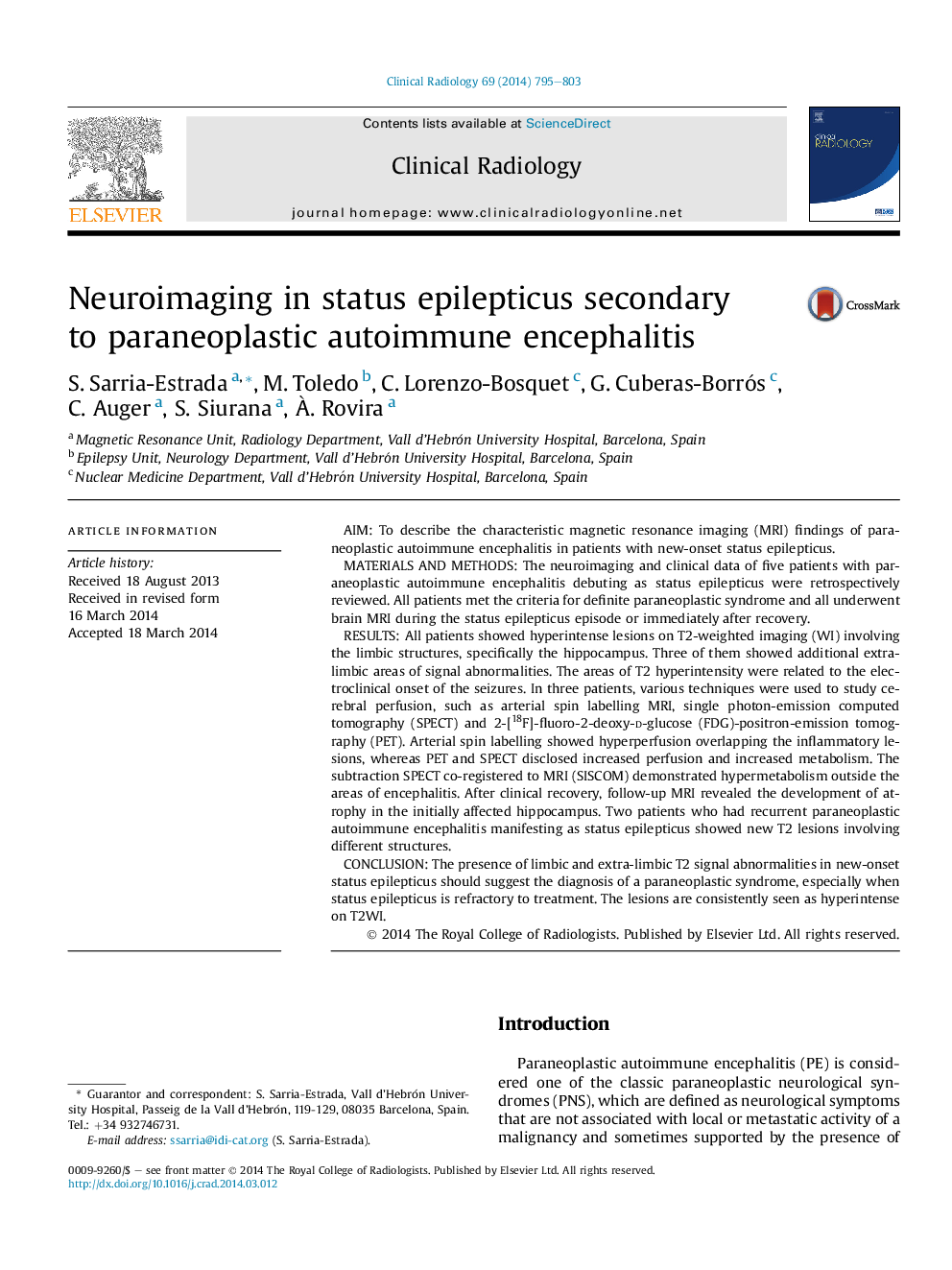| کد مقاله | کد نشریه | سال انتشار | مقاله انگلیسی | نسخه تمام متن |
|---|---|---|---|---|
| 3982119 | 1257717 | 2014 | 9 صفحه PDF | دانلود رایگان |
• New onset status epilepticus can be caused by paraneoplastic encephalitis.
• Scattered areas of vasogenic edema may suggest paraneoplastic encephalitis.
• Areas of increased signal in ASL, SPECT and PET are well correlated.
• Multimodal neuroimaging approach is useful for the diagnostic of status epilepticus.
AimTo describe the characteristic magnetic resonance imaging (MRI) findings of paraneoplastic autoimmune encephalitis in patients with new-onset status epilepticus.Materials and methodsThe neuroimaging and clinical data of five patients with paraneoplastic autoimmune encephalitis debuting as status epilepticus were retrospectively reviewed. All patients met the criteria for definite paraneoplastic syndrome and all underwent brain MRI during the status epilepticus episode or immediately after recovery.ResultsAll patients showed hyperintense lesions on T2-weighted imaging (WI) involving the limbic structures, specifically the hippocampus. Three of them showed additional extra-limbic areas of signal abnormalities. The areas of T2 hyperintensity were related to the electroclinical onset of the seizures. In three patients, various techniques were used to study cerebral perfusion, such as arterial spin labelling MRI, single photon-emission computed tomography (SPECT) and 2-[18F]-fluoro-2-deoxy-d-glucose (FDG)-positron-emission tomography (PET). Arterial spin labelling showed hyperperfusion overlapping the inflammatory lesions, whereas PET and SPECT disclosed increased perfusion and increased metabolism. The subtraction SPECT co-registered to MRI (SISCOM) demonstrated hypermetabolism outside the areas of encephalitis. After clinical recovery, follow-up MRI revealed the development of atrophy in the initially affected hippocampus. Two patients who had recurrent paraneoplastic autoimmune encephalitis manifesting as status epilepticus showed new T2 lesions involving different structures.ConclusionThe presence of limbic and extra-limbic T2 signal abnormalities in new-onset status epilepticus should suggest the diagnosis of a paraneoplastic syndrome, especially when status epilepticus is refractory to treatment. The lesions are consistently seen as hyperintense on T2WI.
Journal: Clinical Radiology - Volume 69, Issue 8, August 2014, Pages 795–803
